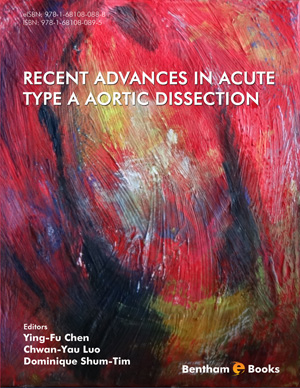Abstract
SHS investigation development is considered from the geographical and historical viewpoint. 3 stages are described. Within Stage 1 the work was carried out in the Department of the Institute of Chemical Physics in Chernogolovka where the scientific discovery had been made. At Stage 2 the interest to SHS arose in different cities and towns of the former USSR. Within Stage 3 SHS entered the international scene. Now SHS processes and products are being studied in more than 50 countries.
Abstract
Malperfusion in type A aortic dissection (TAAAD) describes symptoms and signs of end-organ dysfunction attributable to low blood flow. It is associated with a high mortality rate. Differentiating between static and dynamic malperfusion provides some explanation of its pathophysiology. However, the surgical outcomes of patients with malperfusion are yet to be improved despite progress in perioperative care. This chapter addresses the issues associated with managing patients with TAAAD complicated with malperfusion. We reviewed the major contemporary series to collect the best clinical evidence. Although new techniques, such as percutaneous fenestration and stenting, are emerging as alternative treatments, the best strategy for managing patients with malperfusion is controversial. Some groups have proposed a nonsurgical approach followed by delayed surgery for primary aortopathy. The pros and cons of this strategy are discussed. Patient selection is critical. The delayed-surgery strategy provides patients with mesenteric malperfusion or multiorgan malperfusion an option when the surgical risk is prohibitively high. In contrast, immediate proximal aortic repair is still indicated for coronary malperfusion.
Keywords:
Aortic repair, Arteriography, Cerebral, Coronary, Delayed surgery, Dynamic malperfusion, False lumen, Intimal flap, Ischemia, Limb, Malperfusion, Mesenteric ischemia, Percutaneous fenestration, Renal, Spinal cord, Static malperfusion, Stenting, True lumen, Type A aortic dissection, Visceral.
Recommended Chapters
We recommend

Authors:Bentham Science Books


 Download PDF Flyer
Download PDF Flyer



